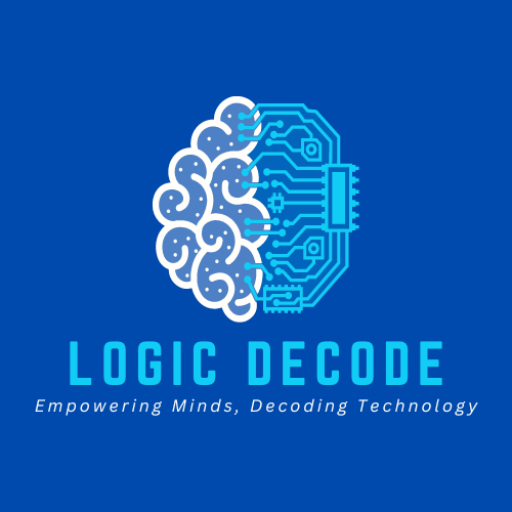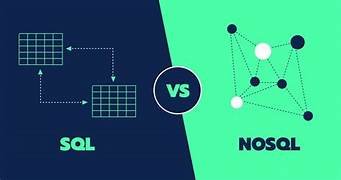In today’s world of web development, software applications, and big data, databases are essential for managing and storing data. There are two primary types of databases used in modern applications: SQL (Structured Query Language) databases and NoSQL (Not Only SQL) databases. Both have their unique features, advantages, and use cases, but understanding their key differences is crucial for selecting the right database for your project.
In this article, we’ll explore the fundamental concepts behind SQL and NoSQL databases, their differences, and how to choose the right database based on your specific needs.
What is SQL?
SQL databases, also known as relational databases, have been the backbone of the data storage world for decades. SQL databases store data in structured tables, using predefined schemas, which means the structure of the data is established before insertion. The key characteristic of SQL databases is the use of tables to represent data and queries to interact with it.
Key Features of SQL Databases:
- Structured Data: Data is stored in tables consisting of rows and columns, where each column has a defined data type.
- Schema-Based: SQL databases require a schema that specifies the structure of the data before it is inserted, ensuring data consistency and integrity.
- ACID Compliance: SQL databases follow the ACID (Atomicity, Consistency, Isolation, Durability) properties, which guarantee reliable transactions even in the case of system failures.
- Standardized Query Language: SQL is the standard language used to manage and query data in relational databases. Queries are written using structured commands like
SELECT,INSERT,UPDATE, andDELETE.
Popular SQL Databases:
- MySQL: A popular open-source relational database system.
- PostgreSQL: A powerful, open-source object-relational database.
- Microsoft SQL Server: A proprietary database from Microsoft.
- Oracle Database: A widely used commercial relational database system.
Example of SQL Syntax:
sqlCopyEditSELECT name, age FROM users WHERE age > 18;
In this example, we query the users table for the name and age of users who are older than 18.
Reference: Database System Concepts by Abraham Silberschatz, Henry F. Korth, and S. Sudarshan.
What is NoSQL?
NoSQL databases are designed for flexibility and scalability. They do not require a predefined schema, meaning they can handle unstructured or semi-structured data. NoSQL databases are widely used in applications that need to store large volumes of diverse data types, or in scenarios where the data structure may evolve over time.
Key Features of NoSQL Databases:
- Flexible Data Models: NoSQL databases can handle a variety of data formats including documents, key-value pairs, graphs, or wide-column stores.
- Schema-less: Data is stored in a flexible format without a predefined schema, which allows for faster development and easier handling of unstructured data.
- Scalability: NoSQL databases are designed to scale horizontally across multiple servers, making them ideal for handling high-volume and distributed data.
- Eventual Consistency: Unlike SQL databases, which focus on strong consistency, many NoSQL databases prioritize availability and partition tolerance, following the CAP theorem (Consistency, Availability, and Partition Tolerance). This can lead to eventual consistency instead of strict consistency.
Popular NoSQL Databases:
- MongoDB: A document-based NoSQL database that stores data in flexible JSON-like format (BSON).
- Cassandra: A distributed wide-column store that excels at handling large datasets.
- Redis: A high-performance key-value store used primarily for caching.
- Neo4j: A graph database that stores data in graph structures with nodes and relationships.
Example of NoSQL Syntax (MongoDB):
javascriptCopyEditdb.users.find({ age: { $gt: 18 } });
In this example, we query the users collection for documents where the age field is greater than 18.
Reference: MongoDB: The Definitive Guide by Kristina Chodorow.
Key Differences Between SQL and NoSQL
| Feature | SQL Databases (Relational) | NoSQL Databases (Non-Relational) |
|---|---|---|
| Data Structure | Structured data in tables with rows and columns | Unstructured or semi-structured data (key-value, document, column, graph) |
| Schema | Fixed schema defined before insertion | Schema-less, flexible data models |
| Scalability | Vertically scalable (scaling up with more powerful hardware) | Horizontally scalable (scaling out across multiple servers) |
| Transactions | Strong ACID compliance | Eventual consistency, with limited ACID support |
| Query Language | SQL (Structured Query Language) | Varies by database (e.g., MongoDB’s query language, Cassandra’s CQL) |
| Examples | MySQL, PostgreSQL, Oracle, SQL Server | MongoDB, Cassandra, Redis, Neo4j |
When to Use SQL vs. NoSQL?
Understanding when to use SQL or NoSQL depends on the specific requirements of your project. Below are some use cases that can help guide your decision.
Use SQL When:
- Data Consistency is Crucial: If your application requires strict consistency and reliable transactions (e.g., financial systems), SQL databases are a better fit due to their ACID properties.
- Complex Queries are Needed: SQL databases are ideal for applications that need complex queries, JOIN operations, and aggregations (e.g., business intelligence tools).
- Structured Data: If your data is well-defined and fits neatly into tables (e.g., customer records, product inventories), SQL is the preferred option.
Use NoSQL When:
- Scalability is a Priority: If you need to handle massive amounts of unstructured data or traffic spikes (e.g., social media platforms, IoT applications), NoSQL databases provide the flexibility and scalability needed.
- Rapid Development: NoSQL databases are ideal for projects that require quick iteration and a schema that might change over time (e.g., prototyping or startups).
- Unstructured or Semi-structured Data: If your data includes non-tabular formats such as JSON documents or graph relationships (e.g., social networks, real-time data streams), NoSQL can handle these formats efficiently.
Reference: Designing Data-Intensive Applications by Martin Kleppmann.
Conclusion
Both SQL and NoSQL databases offer unique features and advantages depending on your application’s needs. SQL databases provide strong consistency, reliability, and complex querying capabilities, making them the go-to choice for applications that require structured data and ACID compliance. On the other hand, NoSQL databases excel in flexibility, scalability, and handling large volumes of unstructured or semi-structured data, making them ideal for dynamic, high-performance applications.
By understanding the fundamental differences and use cases for SQL and NoSQL, you can make a more informed decision about which database technology will best serve your project. Whether you’re building a small-scale web app or a massive distributed system, choosing the right database is key to building a successful, scalable, and reliable application.

